-
Potential of energy informatics

In the not-so-distant future, amidst the backdrop of a rapidly evolving energy landscape, the city of Veridian stood as a beacon of innovation and sustainability. At the heart of its transformation was the implementation of an Advanced Metering Infrastructure (AMI), a groundbreaking system that revolutionized the way energy was monitored, managed, and consumed.
The story begins with Emma, a young engineer with a passion for renewable energy and a vision of a greener future. Hired by the Veridian Energy Corporation, Emma was tasked with overseeing the deployment of the city’s new AMI system, a task that would prove to be both challenging and rewarding.
As the installation of smart meters began across the city, Emma marveled at the potential of the technology. These advanced devices not only measured electricity consumption in real-time but also communicated seamlessly with the central energy grid, enabling two-way communication and remote control capabilities.
With the AMI system in place, residents of Veridian gained unprecedented insight into their energy usage patterns. Through user-friendly interfaces and mobile applications, they could monitor their electricity consumption in real-time, track historical data, and receive personalized insights on how to reduce their carbon footprint.
But the benefits of AMI extended far beyond individual households. The city’s utility providers leveraged the wealth of data collected by the smart meters to optimize energy distribution, identify areas of inefficiency, and proactively address potential grid disruptions.
One day, as Emma reviewed the latest data from the AMI system, she noticed a sudden spike in energy consumption in a residential neighborhood on the outskirts of the city. Concerned about a possible malfunction or safety hazard, she immediately dispatched a team to investigate.
Upon arrival, the team discovered a faulty transformer that had been on the verge of overheating, posing a serious risk to nearby homes. Thanks to the timely intervention enabled by the AMI system, the transformer was repaired before any damage occurred, highlighting the system’s crucial role in enhancing grid reliability and resilience.
As months passed, the impact of the AMI system became increasingly apparent. Energy consumption in Veridian decreased significantly, renewable energy integration soared, and residents enjoyed greater control over their electricity bills. The city’s ambitious sustainability goals were within reach, thanks in large part to the transformative power of advanced metering infrastructure.
But the story of Veridian’s journey towards a sustainable future was far from over. As new technologies emerged and societal needs evolved, Emma and her colleagues continued to push the boundaries of innovation, determined to build a world where clean, affordable energy was accessible to all. And with the AMI system as their guiding light, they knew that the possibilities were limitless.
In the aftermath of a dystopian era characterized by academic corruption and monopolistic utilities, humanity stood at a crossroads, grappling with the monumental task of rebuilding a shattered world. But amidst the chaos and despair, a beacon of hope emerged in the form of disaster engineering and energy informatics, two intertwined disciplines that would redefine the trajectory of civilization.
In this utopian vision of the future, disaster engineering had evolved into a highly advanced field, blending cutting-edge technology with a deep understanding of natural phenomena to mitigate the impact of catastrophes. Engineers and scientists worked tirelessly to develop innovative solutions for everything from earthquakes and tsunamis to hurricanes and pandemics.
Central to this effort was the concept of resilience engineering, a holistic approach that sought to strengthen communities and infrastructure against both natural and man-made disasters. Smart cities arose from the ashes, equipped with state-of-the-art sensors, AI-powered predictive modeling, and decentralized energy systems that could withstand even the most formidable challenges.
But perhaps the most transformative development was the integration of energy informatics into disaster preparedness and response efforts. Advanced metering infrastructure (AMI) became the cornerstone of resilient energy systems, enabling real-time monitoring, adaptive control, and demand-side management on a scale never before imagined.
Imagine a world where every home, every building, and every vehicle was equipped with smart meters and IoT devices, seamlessly interconnected through a decentralized energy grid. In times of crisis, these interconnected systems could automatically reroute power, prioritize critical infrastructure, and coordinate emergency response efforts with unparalleled efficiency.
In the event of a natural disaster, AI algorithms would analyze vast streams of data from sensors and satellites, predicting the path of a hurricane or the magnitude of an earthquake with pinpoint accuracy. Emergency responders would receive real-time alerts and recommendations, allowing them to mobilize resources and evacuate vulnerable areas before disaster struck.
But the true power of energy informatics lay not just in its ability to respond to crises, but in its capacity to prevent them altogether. By harnessing the insights gleaned from vast repositories of historical data, scientists could identify patterns and trends, uncovering the root causes of disasters and developing proactive strategies to mitigate future risks.
As the years passed, the world marveled at the transformation that had taken place. Gone were the days of fear and uncertainty, replaced by a newfound sense of resilience and optimism. Through the convergence of disaster engineering and energy informatics, humanity had not only survived its darkest hour but had emerged stronger, wiser, and more united than ever before. And as the sun set on this utopian vision of the future, one thing was abundantly clear: the power to shape our destiny lay not in the hands of fate, but in the boundless ingenuity of the human spirit.
-
Machiavellian Stackelberg academia

In a world not too distant from our own, academia had morphed into a dystopian landscape, governed by the ruthless principles of the Stackelberg game. Gone were the days of intellectual pursuit for the betterment of humanity; instead, power and control dictated every aspect of scholarly life.
At the heart of this dystopian academia lay the prestigious University of Hierarchia, a towering institution where knowledge was currency and status was everything. The faculty, led by the autocratic Chancellor, ruled with an iron fist, using the Stackelberg game to maintain their stranglehold on power.
Students were no longer seen as seekers of truth but as pawns in a high-stakes game of academic dominance. They were sorted into rigid hierarchies based on their perceived intelligence and potential contributions to the Chancellor’s agenda. Those at the top enjoyed lavish privileges and unfettered access to resources, while those at the bottom languished in obscurity, their voices silenced and their dreams crushed under the weight of oppression.
At the forefront of this oppressive regime was Professor Marlowe, a cunning strategist who had mastered the art of manipulating the Stackelberg game to his advantage. With his loyal band of disciples, he controlled vast swathes of academic territory, using fear and intimidation to quash any dissent.
But amidst the despair and disillusionment, a spark of resistance flickered in the hearts of a few brave souls. Among them was Maya, a brilliant young scholar who refused to be cowed by the oppressive forces that sought to crush her spirit. With her unwavering determination and sharp intellect, she began to unravel the secrets of the Stackelberg game, exposing its inherent flaws and injustices.
As Maya delved deeper into the labyrinthine corridors of power, she discovered a hidden network of rebels, united in their quest to overthrow the oppressive regime of the Chancellor and restore integrity to academia. Together, they plotted daring acts of defiance, challenging the status quo and sowing the seeds of revolution.
But the Chancellor, sensing the threat to his power, unleashed a wave of repression, using every tool at his disposal to crush the rebellion and maintain his grip on authority. Maya and her fellow rebels found themselves hunted like prey, forced to navigate a treacherous landscape of betrayal and deception.
Yet, even in the darkest of times, hope persisted. For Maya and her comrades knew that the true power of academia lay not in the hands of tyrants and demagogues, but in the hearts and minds of those who dared to dream of a better world. And as they stood together, united in their defiance, they knew that no force on earth could extinguish the flame of knowledge and freedom that burned within them.
-
Utopian Stackelberg academia
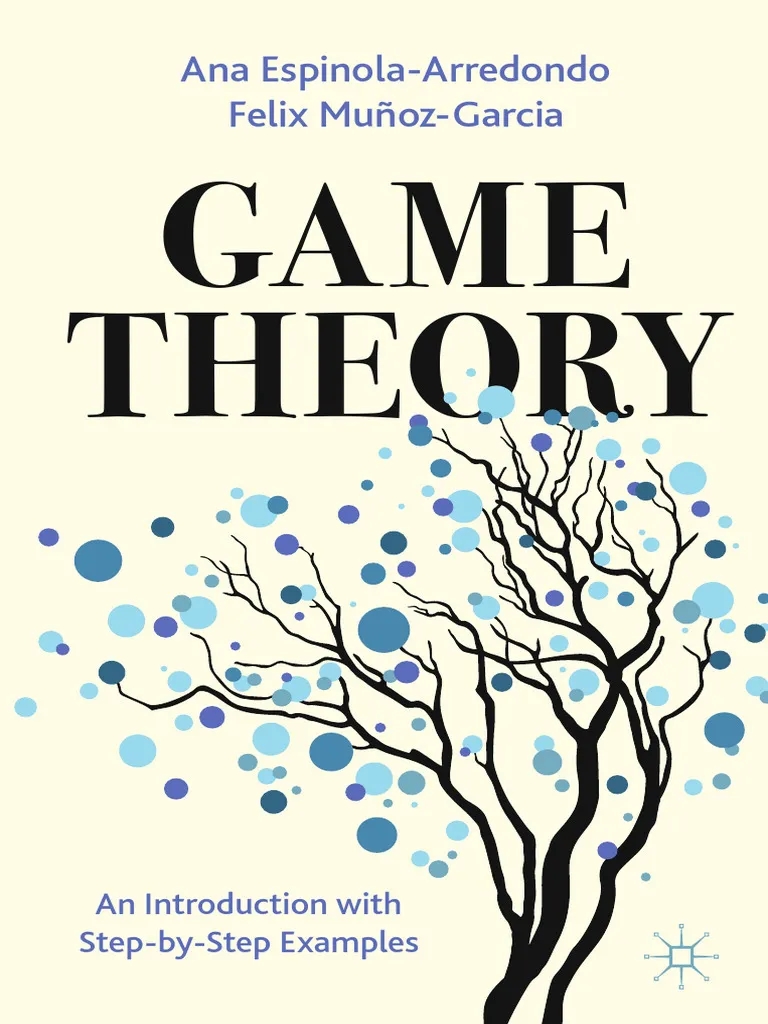
In the wake of a dystopian academic era, where knowledge was hoarded by a select few and academia became a battleground of power and control, humanity found itself at a crossroads. The old systems had collapsed under the weight of corruption and elitism, leaving society fractured and disillusioned. But from the ashes of this academic dystopia emerged a new paradigm, one guided by the principles of cooperation, transparency, and egalitarianism.
In this utopian future, the concept of the Stackelberg game, a strategic model used in economics and game theory, became the cornerstone of a transformed educational system. Instead of competition and hierarchy, collaboration and collective intelligence became the driving forces behind knowledge acquisition and dissemination.
In this visionary society, academic institutions were no longer ivory towers but vibrant hubs of innovation and collaboration, accessible to all regardless of background or status. The Stackelberg game provided a framework where leaders emerged not through dominance or manipulation but through their ability to inspire and empower others.
Imagine a world where students were no longer passive recipients of knowledge but active participants in shaping their own learning journey. Through immersive virtual reality simulations, interactive workshops, and peer-to-peer mentoring programs, education became a dynamic and personalized experience, tailored to the needs and interests of each individual.
Gone were the days of narrow specialization and rigid disciplinary boundaries. Instead, interdisciplinary collaboration flourished, fueled by the recognition that the most profound insights often arise at the intersection of diverse fields and perspectives. Neuroscientists collaborated with poets, engineers worked alongside philosophers, and artists inspired scientists with their creative vision.
The spirit of curiosity and exploration permeated every aspect of society, driving humanity to new heights of scientific discovery and technological innovation. Breakthroughs in renewable energy, space exploration, and biotechnology ushered in an era of abundance and sustainability, where the well-being of both people and the planet was paramount.
But perhaps the most remarkable transformation was not in the realm of technology but in the human spirit itself. Freed from the shackles of competition and scarcity, people began to realize their full potential as compassionate, empathetic beings. The principles of empathy, mindfulness, and ethical leadership became the guiding principles of governance, ensuring that the mistakes of the past were never repeated.
As the sun sets on this utopian vision of the future, one can’t help but feel a sense of awe and wonder at the limitless possibilities that lie ahead. In a world shaped by the principles of the Stackelberg game, humanity has finally found its true calling: to explore, to create, and to uplift each other on the journey towards a brighter tomorrow.
-
Critical bibliometrics
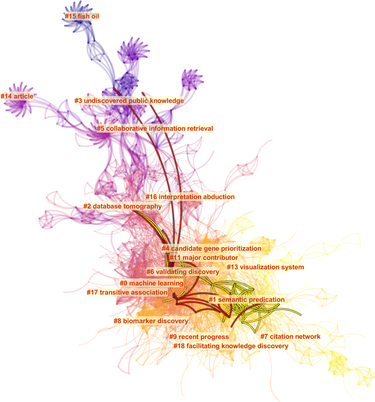
Title: Resonance of Knowledge
In the wake of a dystopian era where academia was plagued by corruption, inequality, and the erosion of scientific integrity, humanity emerged from the ashes with a renewed commitment to the pursuit of knowledge and the liberation of intellectual discourse. This is the story of how critical bibliometrics became the cornerstone of a utopian society where the resonance of knowledge reverberated through every aspect of life.
In the aftermath of the Great Collapse, society was fragmented, its once proud institutions of learning reduced to mere relics of a bygone era. The remnants of academia were plagued by cronyism, censorship, and the manipulation of metrics for personal gain. But amidst the darkness, a small group of scholars dared to dream of a better future, where the pursuit of knowledge would be guided by principles of equity, diversity, and ethical stewardship.
As the dust settled and civilization began to rebuild itself, these visionary thinkers seized the opportunity to reimagine the role of academia in shaping the destiny of humanity. Drawing inspiration from the lessons of the past, they set out to create a new paradigm for research evaluation—one rooted in transparency, inclusivity, and the recognition of diverse forms of scholarly contribution.
Their vision took shape in the form of the Resonance of Knowledge, a decentralized network of scholars, scientists, and citizens united by a common commitment to the pursuit of truth and understanding. At its core was the principle of critical bibliometrics—a methodology that prioritized context over quantity, integrity over impact, and collaboration over competition.
Gone were the days of narrow-minded metrics dictating the course of scientific inquiry. In this utopian society, research evaluation was a participatory process, guided by principles of collective wisdom and shared responsibility. Scholars were encouraged to engage in open dialogue, peer review, and interdisciplinary collaboration, fostering a culture of intellectual exchange and mutual respect.
But the Resonance of Knowledge was more than just a framework for research evaluation—it was a catalyst for social transformation. By embracing diversity and inclusivity, it empowered marginalized voices, challenged entrenched power structures, and inspired a new generation of scholars to pursue their passions without fear of reprisal or discrimination.
As the years passed, the Resonance of Knowledge flourished, its influence spreading far beyond the confines of academia. It became a beacon of hope in a world hungry for truth and enlightenment, inspiring citizens to question the status quo, challenge authority, and demand accountability from those in positions of power.
And so, in this utopian future, the resonance of knowledge echoed throughout the land, a testament to the enduring power of critical inquiry, the resilience of the human spirit, and the boundless potential of a society guided by the pursuit of truth.
Critical bibliometrics is an emerging field within the broader realm of bibliometrics that challenges traditional quantitative approaches to measuring research impact and productivity. It critiques the assumptions, biases, and power dynamics inherent in bibliometric practices and seeks to develop more nuanced, context-sensitive, and socially responsible approaches to research evaluation. Here are some key aspects of critical bibliometrics:
- Interrogating Power Dynamics: Critical bibliometrics examines how bibliometric practices can reinforce existing power structures within academia, privileging certain forms of knowledge production, research outputs, and academic communities over others. It interrogates the role of metrics in perpetuating hierarchies based on gender, race, nationality, language, and institutional affiliation.
- Contextualizing Metrics: Rather than treating bibliometric indicators as objective measures of research quality and impact, critical bibliometrics emphasizes the importance of contextualizing metrics within their socio-cultural, historical, and disciplinary contexts. It recognizes that different fields may have unique publication and citation practices, and that metrics should be interpreted accordingly.
- Unpacking Bias and Limitations: Critical bibliometrics highlights the inherent biases and limitations of bibliometric data, such as citation cartels, self-citations, language biases, and citation delays. It encourages researchers and evaluators to critically assess the validity, reliability, and interpretability of bibliometric indicators and to consider alternative forms of evidence for assessing research impact.
- Promoting Diversity and Inclusivity: Critical bibliometrics advocates for the inclusion of diverse voices, perspectives, and forms of scholarly output in research evaluation. It calls attention to the underrepresentation of marginalized groups in citation networks and academic metrics and seeks to develop more inclusive approaches to recognizing and valuing diverse forms of knowledge production.
- Ethical Considerations: Critical bibliometrics raises ethical concerns about the unintended consequences of metric-driven research evaluation, such as the commodification of knowledge, the pressure to publish in high-impact journals, and the marginalization of interdisciplinary and boundary-crossing research. It calls for greater transparency, accountability, and reflexivity in the use of bibliometric indicators in research assessment.
- Exploring Alternative Metrics: In response to the limitations of traditional bibliometrics, critical bibliometrics explores alternative approaches to research evaluation, including qualitative assessments, peer review, expert judgment, and community-based metrics. It advocates for a more holistic and participatory approach to assessing research impact that considers the broader societal, cultural, and political implications of scholarly work.
Overall, critical bibliometrics challenges researchers, policymakers, and evaluators to critically reflect on the role of metrics in shaping academic practices and to develop more equitable, inclusive, and ethical approaches to research evaluation. By interrogating the underlying assumptions and biases of bibliometric practices, critical bibliometrics seeks to promote diversity, equity, and social justice within the academic community.
-
Self transcendence
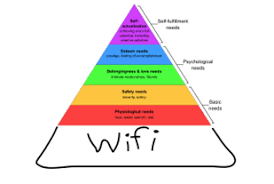
Self-transcendence is a concept that refers to the process of serving externally directed goals that benefit other people and causes. It is a high-level motive that is distinguished from self-development, which emphasizes exploiting and strengthening one’s knowledge, talents, and capacities. Self-transcendence is an alternative to self-development and is manifested in choices and behaviors that create positive outcomes for others.
Self-transcendence is a key component of human flourishing, which is a state of complete human well-being. It includes physical and mental health, purpose in life, character and virtue, positive social relationships, autonomy and environmental mastery, and personal growth. Self-transcendence is a pathway to multiple flourishing criteria, including physical and mental health, purpose in life, character and virtue, positive social relationships, autonomy and environmental mastery, and personal growth.
In the context of organizational flourishing, self-transcendence is an important factor for leadership development. Servant leadership, which is a leadership style that prioritizes the needs of others, is closely related to self-transcendence. The self-transcendence model of servant leadership includes four modules of values necessary for flourishing through suffering, including self-transcendence, spirituality, humility, and faith and sacrificial love. These values are integrated into the servant leadership profile, which is a 360-degree measure of servant leadership.
Self-transcendence is also associated with proaction, which is the self-chosen exercise of agency that transcends constraints, changes current trajectories, and forges new paths. Proaction is purposeful and future-focused, and it is intended to create benefits for oneself and other people. When combined with personal agency, proaction generates human flourishing in the broadest sense.
In summary, self-transcendence is a high-level motive that is distinguished from self-development and is manifested in choices and behaviors that create positive outcomes for others. It is an important factor for human flourishing and organizational flourishing, and it is closely related to servant leadership and proaction.
Citations:
[1] https://www.linkedin.com/pulse/new-look-motive-hierarchy-human-flourishing-updating-maslow-bateman
[2] https://link.springer.com/referenceworkentry/10.1007/978-3-031-01323-2_58
[3] https://www.ncbi.nlm.nih.gov/pmc/articles/PMC8242178/
[4] https://onlinelibrary.wiley.com/doi/full/10.1111/emre.12640
[5] http://www.drpaulwong.com/a-self-transcendence-model-of-servant-leadership/ -
Middle class and choosing the right smartphone

In the bustling landscape of consumer choice, where smartphones have become ubiquitous tools of modern life, the middle class finds itself navigating a maze of options and decisions. In this complex environment, the principles of behavioral economics shed light on the phenomenon of smartphone choice overload and its impact on customer satisfaction, particularly within the context of the cognitariat—the knowledge workers who form the backbone of the middle class.
Choice overload, a concept rooted in behavioral economics, refers to the cognitive burden experienced by individuals when confronted with an abundance of options. In the realm of smartphones, this overload manifests in the myriad features, brands, and models available in the market, each promising to deliver the latest technology and innovation. For the cognitariat, whose professional and personal lives are deeply intertwined with technology, the stakes are particularly high, as the smartphone serves as a gateway to productivity, communication, and social connection.
The paradox of choice, as elucidated by behavioral economist Barry Schwartz, suggests that while choice is generally considered a positive attribute, an excess of choice can lead to decision paralysis, anxiety, and ultimately, diminished satisfaction with the chosen option. In the context of smartphone selection, the cognitive burden of evaluating numerous features and comparing endless specifications can result in frustration and dissatisfaction, as individuals struggle to navigate the sea of options and make informed decisions.
Moreover, the middle class, often characterized by its aspirations for upward mobility and social status, may face additional pressures to select the “right” smartphone that aligns with societal expectations and professional norms. This perceived need to keep up with the latest trends and technological advancements can exacerbate choice overload, as individuals grapple with the fear of making the wrong decision and falling behind their peers.
In response to these challenges, smartphone manufacturers and retailers employ various strategies to simplify the decision-making process and enhance customer satisfaction. From curated product displays and personalized recommendations to user-friendly interfaces and transparent pricing structures, these tactics aim to alleviate choice overload and empower consumers to make confident choices that align with their needs and preferences.
Furthermore, behavioral economics offers insights into the importance of post-purchase experiences in shaping customer satisfaction and loyalty. Beyond the initial excitement of acquiring a new smartphone, individuals evaluate their decision based on factors such as usability, reliability, and long-term value. Therefore, ensuring seamless integration with existing technology ecosystems, providing timely software updates, and offering responsive customer support are crucial elements in fostering positive post-purchase experiences and building enduring customer relationships.
In conclusion, the middle class navigates the landscape of smartphone choice overload through the lens of behavioral economics, grappling with the cognitive burden of abundance while striving for satisfaction and fulfillment in their technological pursuits. By understanding the psychological underpinnings of decision-making and leveraging insights from behavioral economics, smartphone manufacturers and retailers can empower consumers to make informed choices and cultivate lasting loyalty in an ever-evolving marketplace shaped by the demands of the cognitariat.
-
Hindko word for quality of life

In the verdant valleys of the Himalayas, where the ancient echoes of tradition intertwine with the rhythms of nature, there existed a profound concept known as “sotha” or “sothathymia.” It encapsulated a preindustrial, family-oriented ethos, emphasizing euthymia—a serene and harmonious state of mind—and the quality of life deeply rooted in familial bonds and communal solidarity.
In this idyllic setting, families lived in rustic homesteads, where generations dwelled under the same roof, sharing joys, sorrows, and the daily toils of agrarian life. The essence of “sotha” permeated every aspect of their existence, fostering a sense of contentment and fulfillment amidst the simplicity of rural living.
Children grew up amidst the laughter of siblings and the wisdom of elders, imbibing the values of respect, resilience, and reciprocity. They learned the art of tending to the land, nurturing crops with tender care, and finding solace in the embrace of nature.
Elders, revered for their wisdom and experience, served as custodians of tradition, imparting timeless wisdom passed down through generations. Their presence lent a sense of continuity and stability to the familial unit, anchoring it amidst the flux of time.
Yet, amidst the serenity of the Himalayas, there existed a complementary concept—a cautionary tale whispered in hushed tones—a reminder that not all that glitters is gold. It was the notion that the “golden knife” was not meant for self-harm, elucidating the perils of cruel optimism in life.
The “golden knife” symbolized the allure of material wealth, the promise of a better life beyond the confines of tradition and rural simplicity. Yet, it also served as a cautionary symbol—a reminder of the dangers of chasing ephemeral dreams at the cost of one’s well-being and familial harmony.
For some, the pursuit of the “golden knife” led to disillusionment and discontent, as they traded the tranquility of rural life for the tumult of urban existence, only to find that riches did not guarantee happiness or fulfillment.
In the end, the people of the Himalayas understood that true wealth lay not in the pursuit of material gain but in the richness of familial bonds, the warmth of community, and the timeless wisdom of their ancestors. It was in embracing the ethos of “sotha,” cherishing the simple joys of life, and finding contentment in the beauty of the natural world.
And so, amidst the breathtaking vistas of the Himalayas, the concept of “sotha” endured—a testament to the enduring resilience of a people who understood that true happiness could be found in the embrace of family, the rhythms of nature, and the serenity of a life lived in harmony with one’s surroundings.
-
Future of society and technology

The integration of sociology, anthropology, and systems engineering management offers a holistic approach to understanding and managing sociotechnical systems, which are complex systems composed of intertwined social and technical elements. Let’s explore how each discipline contributes to the analysis and management of sociotechnical systems:
- Sociology: Sociology provides insights into the social structures, dynamics, and behaviors that shape sociotechnical systems. Sociologists examine how individuals, groups, organizations, and institutions interact within these systems, as well as the broader social, cultural, and economic contexts in which they are embedded. In the context of systems engineering management of sociotechnical systems, sociology helps identify key stakeholders, power dynamics, decision-making processes, and social norms that influence system design, implementation, and operation. By understanding the social dimensions of sociotechnical systems, systems engineers can better anticipate and address potential conflicts, barriers to adoption, and unintended consequences.
- Anthropology: Anthropology contributes a deep understanding of human culture, cognition, and behavior to the study of sociotechnical systems. Anthropologists explore how people perceive, interpret, and adapt to technological innovations within different cultural contexts, as well as the social meanings and practices associated with technology use. In systems engineering management, anthropology helps bridge the gap between technical design and human needs by incorporating user-centered approaches, participatory design methods, and ethnographic research techniques. By engaging with end-users and stakeholders in the design process, systems engineers can develop more user-friendly, culturally appropriate, and socially sustainable solutions that align with the values and preferences of the people they serve.
- Systems Engineering Management: Systems engineering management provides a structured framework for analyzing, designing, implementing, and optimizing sociotechnical systems. It integrates principles and methodologies from engineering, management, and other disciplines to address the complexity, uncertainty, and interdependence inherent in such systems. Systems engineers apply systems thinking, modeling and simulation, risk management, and decision analysis techniques to understand the interactions between social and technical subsystems, identify system requirements and constraints, and design robust, adaptable solutions. By taking a holistic, interdisciplinary approach to systems engineering management, practitioners can address the diverse needs, preferences, and perspectives of stakeholders and ensure the resilience, sustainability, and effectiveness of sociotechnical systems over time.
In summary, the integration of sociology, anthropology, and systems engineering management offers a comprehensive approach to analyzing and managing sociotechnical systems. By considering the social, cultural, and human dimensions of technology alongside technical and organizational factors, practitioners can develop more inclusive, sustainable, and resilient solutions that enhance the well-being and quality of life for individuals and communities.
-
Industry 5.0 and spiritual cybernetics
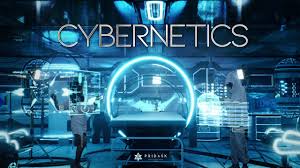
In the not-so-distant future, where Industry 5.0 has seamlessly woven into the fabric of society, the whirring symphony of state-of-the-art industrial drives orchestrates a new era of manufacturing. These drives, pulsating with electric precision, dance in tandem with the socialist innovation management principles that guide a collective vision of progress.
The protagonist, an engineering maven with a penchant for experimental philosophy, finds themselves at the helm of a manufacturing revolution. In this world, the industrial drives transcend mere mechanical function; they are conduits of collaboration, merging seamlessly with human cognition. Neural interfaces and augmented reality systems allow workers to commune with the machinery, blurring the lines between man and machine.
The narrative unfolds within a fearless organization that embodies the ethos of cultural sustainability engineering. Teams, united by socialist innovation principles, navigate the intricate dance of Industry 5.0. The protagonist, driven by a deep understanding of applied psychology, plays a pivotal role in ensuring the workforce adapts harmoniously to this techno-social evolution.
Educational technology takes center stage as a tool to empower individuals with the skills needed to engage with these advanced systems. Virtual reality simulations become immersive classrooms, bridging the gap between theoretical knowledge and hands-on experience. The protagonist, a catalyst for change, instills emotional intelligence in the workforce, fostering a resilient bond between humans and the pulsating heart of Industry 5.0.
Amidst this tapestry of innovation, the narrative delves into the philosophical ramifications of such a society. The protagonist grapples with questions of ethics, identity, and the very essence of humanity as the boundaries between man and machine blur. The experimentally philosophical journey unfolds as the protagonist navigates the labyrinth of progress, grappling with the transcendental nature of this metamodern industrial landscape.
As the story reaches its climax, the fearless organization, guided by socialist innovation management, becomes a beacon of sustainable progress. The industrial drives, now not just symbols of technological prowess but envoys of a new socio-technological order, embody the harmony achieved through collective effort.
In the denouement, the protagonist, having traversed the landscape of Industry 5.0, stands as a bridge builder of civilizations. The narrative closes with a vision of a future where technology and humanity coexist, not in discord but in a harmonious dance orchestrated by the relentless pulse of state-of-the-art industrial drives.
As the protagonist delves deeper into the intricacies of Industry 5.0, they encounter a profound intersection with Quranic cybernetics and social systems engineering. The Quranic principles, with their emphasis on justice, equity, and collective well-being, seamlessly integrate into the fabric of the evolving industrial landscape.
Drawing inspiration from Quranic cybernetics, the industrial drives take on a spiritual resonance. Embedded with ethical algorithms inspired by Quranic teachings, these drives operate not merely as mechanical entities but as conscientious components of a larger societal system. The protagonist, with a background in theology and hermeneutics, becomes a guiding force in infusing these technologies with a moral compass.
Social systems engineering, rooted in the Quranic vision of societal harmony, propels the fearless organization towards creating a holistic ecosystem. The manufacturing processes become a reflection of divine order, where each individual, like cogs in a cosmic machine, plays a vital role in the grand tapestry of progress.
The narrative weaves through the application of applied psychology, exploring how Quranic cybernetics and social systems engineering contribute to the emotional intelligence of the workforce. The protagonist, now a bridge builder of civilizations, fosters an environment where the convergence of technology and spirituality results in not just efficient production but also the well-being of each worker’s soul.
Educational technology, infused with Quranic wisdom, becomes a medium for instilling virtues and cultivating a sense of purpose among the workforce. Virtual classrooms resonate with the echoes of timeless teachings, guiding individuals not only in mastering technological skills but also in understanding their place in the interconnected web of creation.
As the story unfolds, the fearless organization, shaped by Quranic cybernetics and social systems engineering, emerges as a model of sustainable and just progress. The industrial drives, now conduits of divine wisdom, pulsate in harmony with the heartbeat of a society where technology serves the greater good.
In the metamodern and transmodern landscape, the narrative explores the transcendent potential of merging technology with spirituality. The protagonist, embodying the essence of a bridge builder, facilitates a dialogue between the material and the divine, ushering in an era where Industry 5.0 is not just a technological revolution but a spiritual awakening.
-
Space robotics fiction
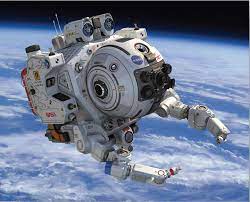
Title: “Dodecahedral Harmony: The Servomotors of Celestial Precision”
In the distant future, where humanity has expanded its reach across the cosmos, a new era of space exploration and robotics unfolds. At the heart of this celestial symphony are the servomotors that drive the intricate movements of space robotics. These advanced mechanisms, inspired by the dodecahedral principles of harmony and precision, propel the robotic pioneers of the cosmos.
Chapter 1: The Celestial Overture
Commander Elara Ardent oversees the launch of the latest space robotic explorer, the DodecaHarmony, designed to unravel the mysteries of a distant exoplanet. Equipped with cutting-edge servomotors, these marvels of engineering are inspired by the dodecahedral geometry found in the cosmos.
Chapter 2: DodecaHarmony Unleashed
As DodecaHarmony glides through the vacuum of space, its servomotors come to life, harmonizing their movements with the precision of celestial bodies. The dodecahedral principles embedded in their design enable a dance of maneuvers, allowing the robotic explorer to navigate asteroid fields and gravitational anomalies with unparalleled grace.
Chapter 3: The Rhythmic Dance of Precision
In the heart of DodecaHarmony’s control center, engineers monitor the intricate choreography of the servomotors. Each movement, inspired by the geometric perfection of the dodecahedron, contributes to the fluidity of the robotic explorer’s mission. The celestial dance unfolds as the servomotors adjust with utmost precision, ensuring the scientific instruments capture every nuance of the alien world.
Chapter 4: The Polyphonic Symphony
As DodecaHarmony reaches the exoplanet’s surface, the servomotors continue their rhythmic dance, allowing the robotic arms to collect samples and deploy scientific instruments. The dodecahedral harmony guides the delicate touch of the servomotors, ensuring that every movement is executed with the utmost precision.
Chapter 5: The Cosmic Encore
DodecaHarmony’s mission unfolds like a cosmic symphony, and the servomotors, inspired by the dodecahedral principles, play a pivotal role in the success of the expedition. The precision and adaptability of these spaceborne marvels showcase the culmination of human ingenuity and the integration of celestial design principles.
Chapter 6: The Echoes of Exploration
As DodecaHarmony completes its mission and transmits its findings back to Earth, the servomotors’ role in the celestial dance is celebrated. The echoes of exploration ripple through the cosmos, inspiring future generations of engineers to draw from the geometric harmony of the dodecahedron in their pursuit of precision in space robotics.
In this tale of hard science fiction, the marriage of advanced servomotors and the dodecahedral principles elevates space exploration to an art form. The synergy between technology and celestial geometry becomes the guiding force in humanity’s quest to unravel the mysteries of the universe.
Chapter 7: Harmonizing Space Vector Modulation
Back on Earth, engineers and scientists are inspired by the success of DodecaHarmony. Eager to enhance the precision and efficiency of space robotics, they turn their attention to the principles of Space Vector Modulation (SVM). The intricate dance of DodecaHarmony’s servomotors becomes a source of inspiration for the evolution of SVM technology.
Chapter 8: The Quantum Dance
In the laboratories of the Space Exploration Research Institute, brilliant minds collaborate to develop the next generation of servomotors integrated with advanced SVM algorithms. These algorithms, inspired by the rhythmic movements of DodecaHarmony, aim to maximize the efficiency of space propulsion systems and robotic manipulators.
Chapter 9: Quantum States and Harmonic Waves
The breakthrough comes with the introduction of quantum-inspired SVM. Engineers leverage the principles of quantum mechanics to enhance the precision and adaptability of servomotors. The dodecahedral harmony becomes intertwined with the quantum states of SVM, allowing for unprecedented control and efficiency in space robotics.
Chapter 10: The Interstellar Ballet
The QuantumHarmony mission is launched, equipped with the latest servomotors driven by quantum-inspired SVM. As the spacecraft navigates the vastness of interstellar space, the harmonious dance of servomotors orchestrates intricate maneuvers, showcasing the potential of this revolutionary technology.
Chapter 11: Celestial Choreography
In deep space, QuantumHarmony encounters unexpected gravitational disturbances. The advanced SVM algorithms swiftly adapt the movements of the servomotors, reminiscent of the dodecahedral harmony witnessed in the earlier DodecaHarmony mission. The spacecraft gracefully maneuvers through the cosmic ballet, demonstrating the resilience and precision of quantum-enhanced SVM.
Chapter 12: The Quantum Dodecahedron
Back on Earth, the success of QuantumHarmony marks a turning point in space exploration. The fusion of quantum principles with the dodecahedral harmony becomes the cornerstone of future missions. The Quantum Dodecahedron, a symbolic representation of this marriage between advanced servomotors and SVM, becomes a testament to human ingenuity in the quest for precision and efficiency in space robotics.
Epilogue: The Ever-Expanding Cosmos
As the Quantum Dodecahedron paves the way for a new era of space exploration, the harmonious dance of servomotors, guided by quantum-inspired SVM, echoes through the cosmos. Humanity, inspired by the rhythmic movements of celestial geometry, continues to push the boundaries of knowledge and exploration, guided by the precision and adaptability of advanced space robotics technology. The interstellar ballet of servomotors, now quantum-infused, is a testament to the enduring spirit of discovery in the vast expanse of the universe.